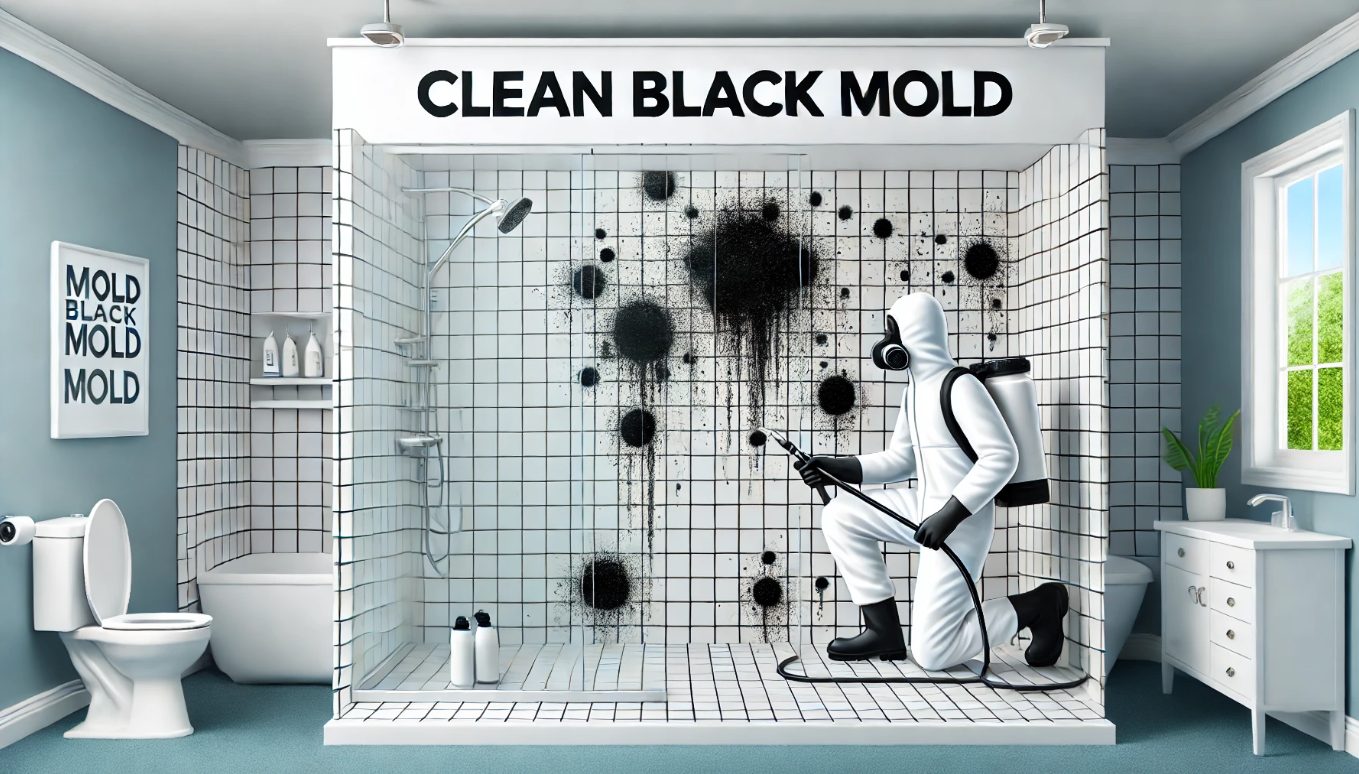Stachybotrys chartarum, commonly known as black mold, is a dreaded household problem and should not be treated lightly. The spores spread by the fungus can pose several immediate and long-term health risks if left untreated.
It is a fallacy that harmful mold has to look scary and menacing, and the longer you wait to get rid of it, the more the chances are that you will not be able to do so effectively. If you’ve noticed dark, slimy spots on walls, ceilings, or other damp areas, be sure to address them promptly. This is an easy-to-follow guide to help you clean black mold and create a healthier home for you and your loved ones.
Identify the Source of Mold Growth
First, to know if you have a mold problem, you must know where to look. Mold thrives in damp, humid environments, like areas with water drainage, basements, kitchens, etc.
Before cleaning, you should first locate and eliminate the root cause of the moisture that led to the infestation. Fixing these problems first will help prevent mold from coming back after cleaning. Common sources are –
- Leaking pipes or roofs
- Poor ventilation in bathrooms or kitchens
- Flooding or water damage
- High humidity areas
Prepare Safety Equipment
Do not skimp on using the proper safety equipment. Without proper protection, you can be exposed to spores which might affect your health. Below is the list of safety gear you will need –
- N95 respirator mask or equivalent
- Protective gloves (rubber, nitrile, or latex)
- Safety goggles (without vents)
- Long-sleeved clothing and pants
- Large plastic sheet/bag to seal off the affected area and prevent spores from spreading.
Choose the Right Cleaning Solution
Here are a few options for cleaning agents that will properly get rid of your mold problem –
- White Vinegar: Vinegar is acidic and kills up to 82% of mold species. You can use undiluted white vinegar and let it sit for an hour for best results.
- Baking Soda Solution: Mix 1 teaspoon of baking soda with water in a spray bottle so that it is easier to apply on the infested area.
- Hydrogen Peroxide: Make a 3% hydrogen peroxide solution in a spray bottle and let it sit for 10 minutes before scrubbing.
- Commercial Mold Cleaners: Look for EPA-approved mold-removal products for tougher mold problems. The directions for the best results will be on the label.
Cleaning the Mold
Here are the steps to safely and effectively clean up the mold –
1. Ventilate the Area: Open all doors and windows in the area and use fans to increase airflow while you work to minimize exposure to spores.
2. Apply the Cleaning Solution: Spray or apply your solution of choice generously onto the moldy surface and let it sit as directed above, or as mentioned on the label for commercial solutions.
3. Scrub: Use a brush or scrub pad to remove the mold while being careful not to damage the surfaces. Choose the type of brush or scrub pad and the hardness of their bristles according to the surface you are cleaning.
3. Wipe: Thoroughly clean the area using disposable towels or cloths to wipe the area.
4. Rinse and Dry: Rinse the cleaned area with water and dry it thoroughly using fans or dehumidifiers to get rid of any remaining moisture.
5. Dispose of all cleaning materials: Put any cleaning material, cloth, or pieces of affected materials into a plastic bag and dispose of them immediately to prevent further contamination.
Prevent Future Mold Growth
Finally, we arrive at the last step of the process. Preventative measures are key to maintaining a mold-free home. Here are some tips for keeping mold out of your house –
- Fix leaks and areas affected by water damage immediately.
- Use dehumidifiers to maintain indoor humidity below 50%.
- Improve ventilation in moisture-prone areas like kitchens and bathrooms.
- Clean and dry any wet surfaces promptly.
- Regularly inspect damp and humid areas in your home for signs of mold or moisture.
- Use anti-mold products like sprays, paint, primers, etc.
When to Call a Professional
While you can be confident in cleaning up small patches of mold using the DIY methods provided above, there are times when the best option is to just call in the professionals. Professional fire and mold restoration companies have specialized tools and safety measures to handle large mold problems and reduce the chances of them coming back.
Here are the instances where we recommend contacting a mold specialist for professional remediation –
- The area of infestation is over 10 square feet.
- Mold has spread extensively across walls or ceilings.
- You have recurring mold problems despite cleaning.
- You or your family members experience severe health symptoms.
Conclusion
Black mold is a dangerous and stubborn problem that can lead to respiratory issues, allergies, and other health concerns, but with the right approach, you can solve little infestations all on your own.
Look at damp and humid places to find if you in fact have a mold infestation and always protect yourself with proper gear, and remember not to hesitate in seeking professional help for severe infestations.
By taking these steps, you can maintain a cleaner, healthier home for you and your family.
Take action today and enjoy the peace of mind that comes with a mold-free living space!
